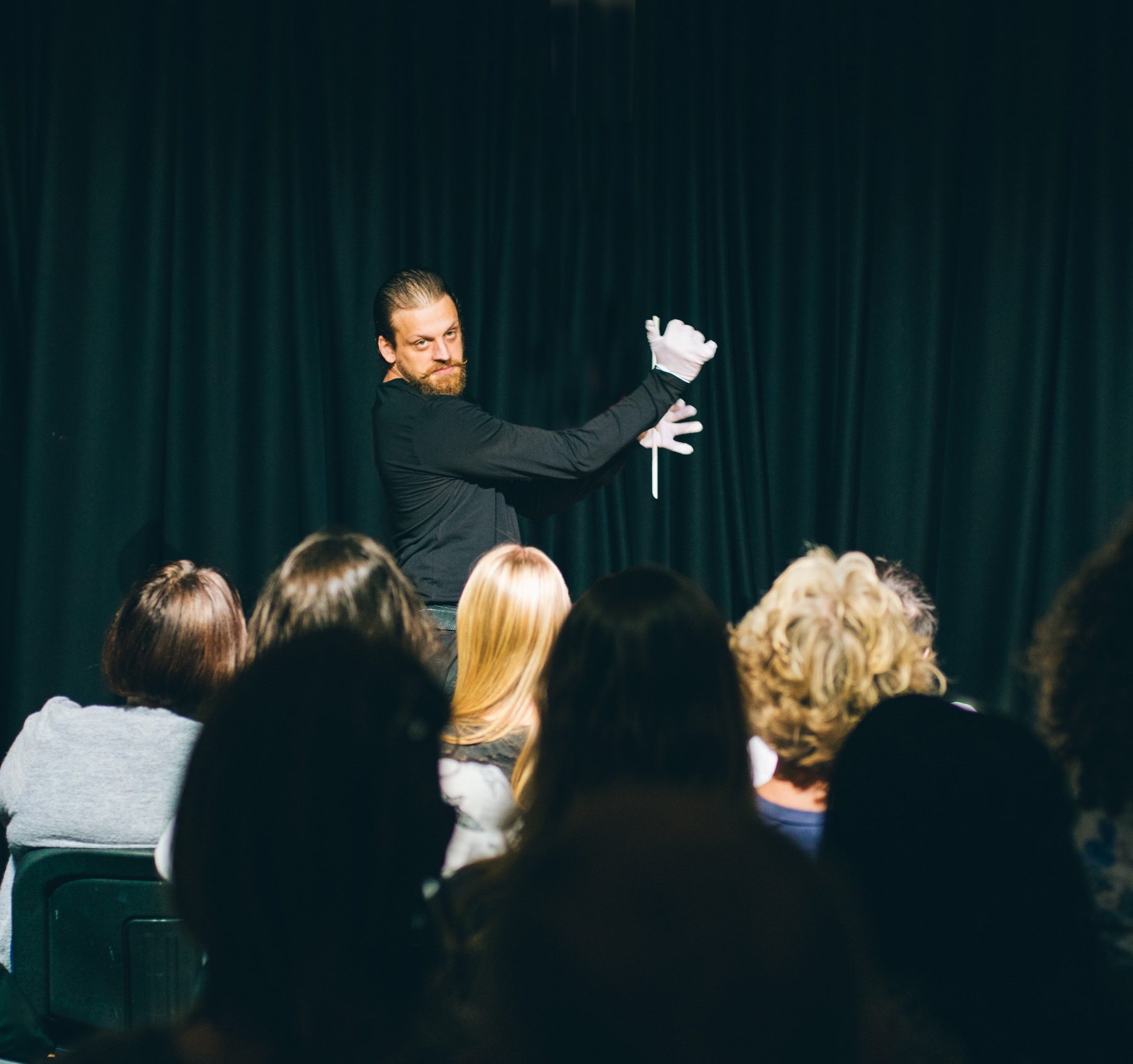Extraordinary Bodies places access at the heart of the creative development of our work. We want creative access to be a part of each performance, it is a key element to the work we create and we want our audience’s to enjoy the experience. We don’t want access to be an afterthought or an add-on for a limited number of shows.
We are looking at different methods and creative techniques to make Splash! a new and accessible performance. We want to bring different art forms together to tell simple stories through a “sensory spectacle”, which all audiences can enjoy together. Visual Vernacular is a creative type of theatre we haven’t worked with before, but we’re excited to introduce to our newest show, Splash!
So, what is Visual Vernacular?
Visual Vernacular is a unique physical theatre technique, with elements of poetry and mime, primarily performed by Deaf artists. This powerful story telling style combines strong movement, iconic BSL signs, with gestures and facial expressions, to capture the world in all its visual complexity.
Cinematic effects are a key feature of performances, such as creating long shots or zoom, playing with fast or slow motion, and panoramic views. Role shifting is another way to play with storytelling. An artist can use movement to morph into different characters, or even objects, to help build a story. By combining these techniques, artists create a very visually exciting and accessible way to enhance storytelling.
How will we include Visual Vernacular in Splash!?
Donna Williams is a Deaf poet and one of the Extraordinary Bodies cast for Splash!, coming to the East Midlands this summer. Donna explains a little more about this creative art form and how we’re bringing it into the show:
“The aim of using BSL poetry and Visual Vernacular (VV) in Splash! is to tell the story in as visual a way as possible, using the beauty and expressiveness of creative signed language to engage with all of the audience.
I love how BSL poetry and VV can tell a story in a beautiful way, rich with detail and cinematic elements, and how using even simple signs can express deep and powerful concepts and meaning.
I hope audiences will appreciate the beauty and power of visual language to communicate and come away with a better understanding of the value of signed languages in the arts and in life.Visual Vernacular will bring an extra element of storytelling and a visual landscape for the audience to explore. By using visual language, it gives access to the show for deaf, hard of hearing and non-verbal audiences. It also adds exciting extra layers of storytelling for all audiences to enjoy.”
Donna Williams
Want to see it in action?
Come and see Splash! on tour this summer, as we visit 5 locations across the East Midlands!
If you can’t make it or wait that long, then watch the short clip below for a great summary of how techniques are used. This feature was part of the BBC’s Deaf Visual Performance ‘See Hear’ programmes.
Donna also recommended some short videos to showcase Visual Vernacular in action:
Dack Virnig: Fish
Bernard Bragg: The Pilot and The Eagle
Ace Mahbaz: Game Over

